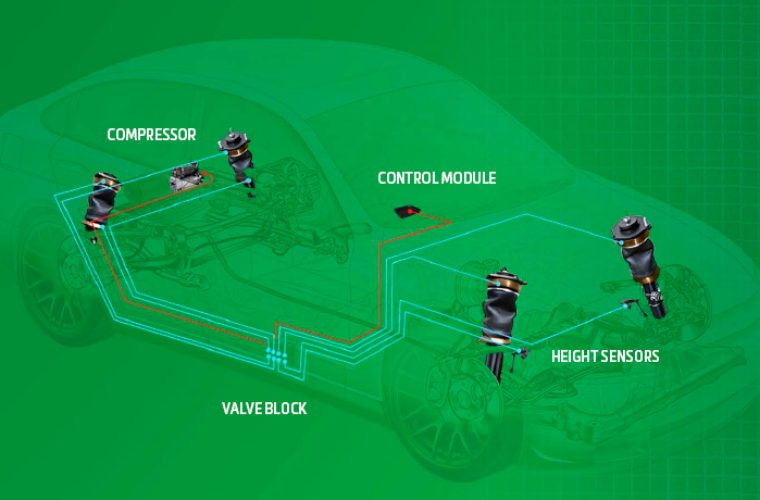Manufacturer of replacement aftermarket air suspension products and accessories, Arnott is this week explaining the basics of an air suspension system.
Air suspension systems comprise of a compressor, valve block, air springs, air struts, control module and height sensors.
Air suspension explained
The air suspension compressor pumps dried air towards the valve block which distributes it to maintain ride height and comfort.
The solenoid valve block is responsible for distributing air into the air suspension system.
Air springs use the compressive abilities of air and rubber to absorb vibrations and raise or lower the vehicle.
Air struts combine a shock with an air spring to provide structural support for the car’s suspension.
The control module manages the vehicle’s air suspension system, optimizing ride comfort, safety and auto-leveling.
Height sensors determine the proper ride height of the vehicle and send instructions to the control module until the vehicle is at the correct height.
An Arnott spokesperson said: “Air suspension is a different suspension system compared to traditional coiled steel springs.
“Heavy-duty rubber air springs provide luxury vehicles with auto-leveling, added safety, and a smoother, more consistent ride.”
Arnott boats more than 300 air suspension parts, covering around 800 applications.
For further information about Arnott, select ‘more details’ below.







